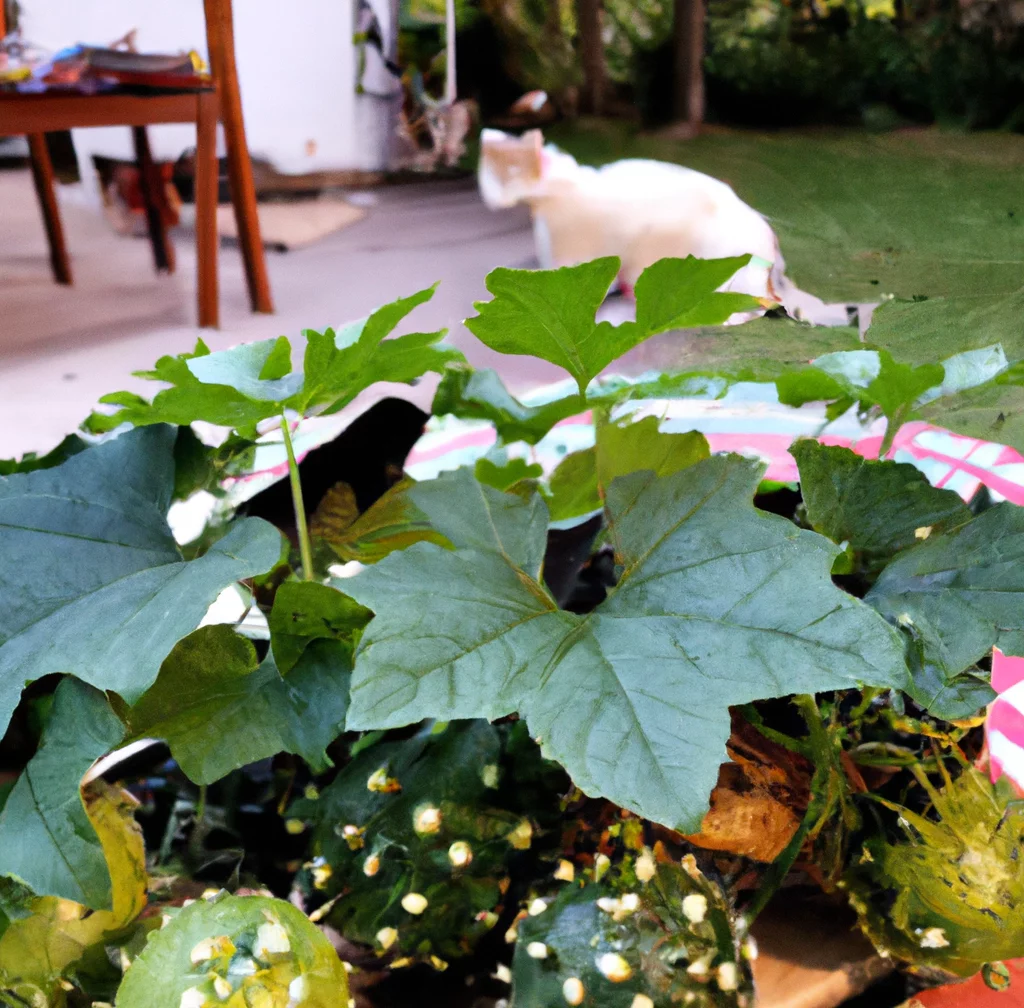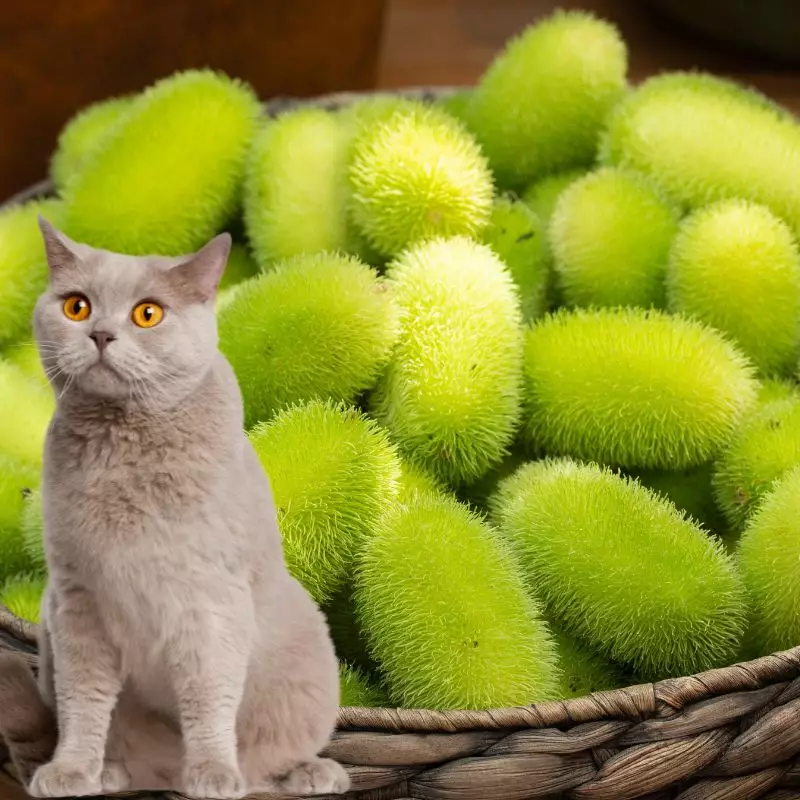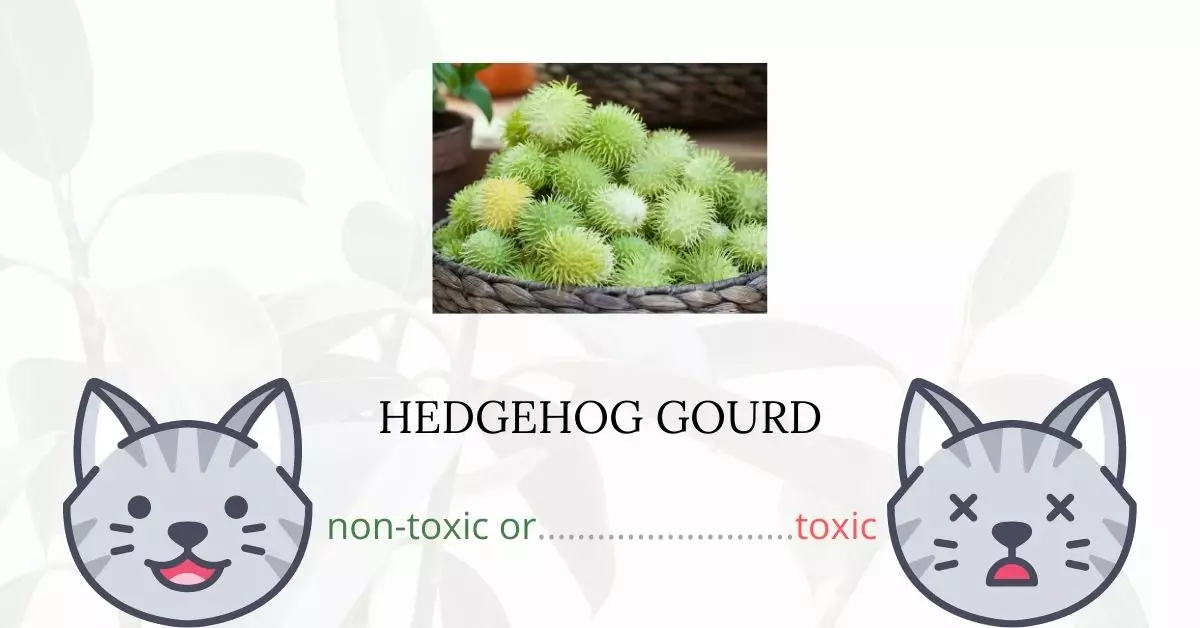Hedgehog Gourd, also known as Teasel Gourd, is generally considered safe for cats.
This article is the result of a collaborative effort with a team of experienced DVMs (doctors of veterinary medicine). Their invaluable input allows us to provide accurate and up-to-date information regarding the potential risks associated with various plants, Hedgehog Gourd in this instance, and their impact on cats. Furthermore, we’ve thoroughly researched high-authority websites such as ASPCA and PetMD to validate our findings.
The ASPCA specifically lists Hedgehog Gourd as one of the non-toxic plants for cats. However, it’s important to note that while some plants may not be inherently toxic, any plant can potentially cause adverse reactions in cats, so always exercise caution and monitor your pet’s interactions with plants.
Can Cats Eat Hedgehog Gourd or Teasel Gourd?

It is generally safe for cats to eat Hedgehog Gourd. It has not been reported to have systematic effects on cats or intense effects on the gastrointestinal tracts.
However, any plant material ingested by a cat may produce signs of vomiting, depression, or diarrhea. You do not have to panic though since these signs are generally mild and self-limiting and often do not require any treatment.
Cats’ bodies are not equipped to digest plant materials because they are obligate carnivores. The mentioned symptoms are just their normal reaction when they have consumed excessive amounts of plants.
What is Hedgehog Gourd or Teasel Gourd?

There are numerous other names for the hedgehog or teasel gourd, including hedgehog cucumber, tiger’s egg, and wild prickly cucumber. Scientifically it is known as Cucumis dipsaceus.
Hedgehog gourd plants, which are native to eastern Africa, are commonly cultivated in the coastal parts of India. They are readily accessible from late spring through summer when it monsoons.
The teasel gourd is so well-liked in the Konkani region on India’s western coast that it is a common ingredient in traditional foods served at regional monsoon festivities. It produces a yellow-green, egg-shaped fruit, and similar to its cucumber relative, this fruit has a thick layer of soft spines covering its outside and a crisp, juicy core that is dotted with small seeds.
The unique and delectable teasel gourd is a great addition that will spice up your palette as well as your garden. Similar to squash, the fruit is stuffed, fried, or pan-fried. It is most frequently consumed with rice. Teasel gourd has long been used in Ayurvedic medicine to promote blood circulation and is said to have antibacterial properties as well.
Keeping Cats Away From Hedgehog Gourd or Teasel Gourd

To keep cats away from your beloved plants, create a plant room and make sure that this area will not be visited by your cats.
Cats adore lemon balm and catnip. Place a few in sturdy plastic pots and scatter the sacrifice plants around the home, keeping them away from your other plants. This will keep your curious cat busy and could prevent damage to some of your other plants.
To discourage cats from digging, cover the soil at the bases of the plants with huge pebbles or stones. Pinecones or aluminum foil might be used as cat deterrents around the planter. Another option is to cover the plant’s base with netting, chicken wire, or any other porous material.
Plants to Avoid For Your Cats
If you are a cat owner and unsure if the plants growing in your yard are harmful to your cats, check out this list of toxic plants for cats. You can also check our list of non-toxic plants for cats.





